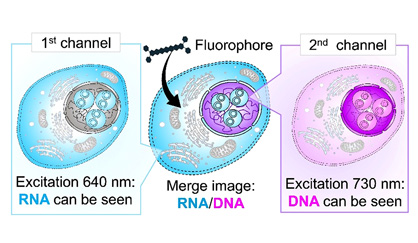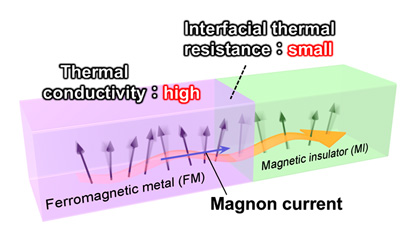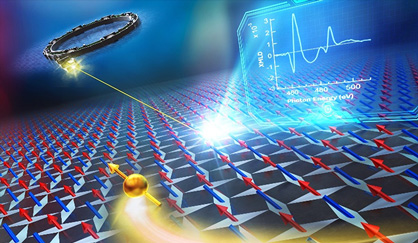World’s First Observation of the Transverse Thomson Effect
— A New Principle 170 Years After the Discovery of the Thomson Effect: Pioneering Next-Generation Thermal Management Technologies —2025.06.26
NIMS (National Institute for Materials Science)
Nagoya University
The University of Tokyo (UTokyo)
Japan Science and Technology Agency (JST)
For the first time in the world, a joint research team from NIMS, Nagoya University and The University of Tokyo has successfully observed the transverse Thomson effect—a phenomenon in which metals or semiconductors release or absorb heat when a heat current, charge current and magnetic field are applied orthogonally to each other. This achievement may contribute to advances in physics and materials science related to the conversion between heat, electricity and magnetism, as well as to the development of new thermal management technologies. The research was published in Nature Physics on June 26, 2025.
Abstract
Background
Key Findings

Figure. Conceptual diagrams of longitudinal and transverse thermoelectric effects
Future Outlook
Other Information
- This project was carried out by Atsushi Takahagi (Graduate Student, Department of Mechanical Systems Engineering, Nagoya University; also a trainee at NIMS) as part of his doctoral program, in collaboration with the following researchers: Ken-ichi Uchida (Distinguished Group Leader, Research Center for Magnetic and Spintronic Materials (CMSM), NIMS; and Professor, Department of Advanced Materials Science, Graduate School of Frontier Sciences, The University of Tokyo), Takamasa Hirai (Senior Researcher, CMSM, NIMS), Sang Jun Park (Postdoctoral Researcher, CMSM, NIMS), Hosei Nagano (Professor, Department of Mechanical Systems Engineering (DMSE), Nagoya University (NU)), and Abdulkareem Alasli (Designated Lecturer, DMSE, NU).
- This work was supported by 1) the JST ERATO UCHIDA Magnetic Thermal Management Materials Project (Research Director: Ken-ichi Uchida; grant number: JPMJER2201); 2) the JSPS Grant-in-Aid for Scientific Research (S) (grant number: 22H04965); 3) the JSPS Grant-in-Aid for Scientific Research (B) (grant number: 19H02585); and 4) the Grant-in-Aid for JSPS Fellows (grant number: 23KJ1122).
- This research was published in the online version of Nature Physics on June 26, 2025
Published Paper
Authors : Atsushi Takahagi, Takamasa Hirai, Abdulkareem Alasli, Sang Jun Park, Hosei Nagano, and Ken-ichi Uchida
Journal : Nature Physics
DOI : 10.1038/s41567-025-02936-3
Publication Date : June 26, 2025
Contact information
Regarding the research
Distinguished Group Leader
Research Center for Magnetic and Spintronic Materials
National Institute for Materials Science
Professor
Department of Advanced Materials Science, Graduate School of Frontier Sciences
The University of Tokyo
TEL: +81-29-859-2062
URL: https://uchida-lab.k.u-tokyo.ac.jp/ (Spin Caloritronics Group | NIMS)
URL: https://www.jst.go.jp/erato/uchida/en/ (Uchida Magnetic Thermal Management Materials | JST ERATO)
Professor
Department of Mechanical Systems Engineering
Nagoya University
TEL: +81-52-789-4470
URL: https://www.eess.mech.nagoya-u.ac.jp/en/ (Thermal Control Engineering Group | Nagoya University)
Media Inquiries
Division of International Collaborations and Public Relations
National Institute for Materials Science
1-2-1 Sengen, Tsukuba, Ibaraki 305-0047, Japan
TEL: +81-29-859-2026
FAX: +81-29-859-2017
Graduate School of Frontier Sciences
The University of Tokyo
5-1-5 Kashiwanoha, Kashiwa, Chiba 277-8561, Japan
Regarding JST Funding Programs
Japan Science and Technology Agency
K's Gobancho Building, 7 Goban-cho, Chiyoda-ku, Tokyo 102-0076, Japan
TEL: +81-3-3512-3528



